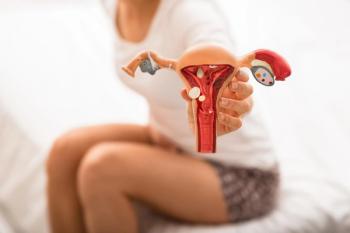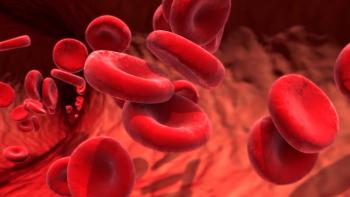
Contemporary OB/GYN week in review: TMS 2025 recap, menopause guidelines, and more
Review some of the top stories from the Contemporary OB/GYN website over the past week and catch up on anything you may have missed.
This week at Contemporary OB/GYN®, we covered topics ranging from new menopause guidelines to increased stillbirth rates. Click the links below to read anything you might have missed from Monday, October 27, to Friday, October 31, 2025.
Here's what you missed at the The Menopause Society’s 2025 Annual Meeting
At The Menopause Society’s 2025 Annual Meeting, held October 21–25 in Orlando, Florida, clinicians and researchers presented new findings on hormone therapy, nonhormonal treatments, vulvar health, and clinical practice patterns in menopause care. Key presentations emphasized individualized treatment approaches, the importance of education across specialties, and the continued need for evidence-based strategies to optimize women’s health through midlife and beyond.
James A. Simon, MD, CCD, MSCP, IF, FACOG, clinical professor of Obstetrics and Gynecology at George Washington University in Washington, DC, presented pooled US safety data showing that the nonhormonal agent elinzanetant was well tolerated over one year of treatment in menopausal women experiencing vasomotor symptoms.
Melissa Mauskar, MD, dermatologist and associate professor of dermatology and obstetrics and gynecology at UT Southwestern, addressed diagnostic and management challenges in vulvar disorders. She noted that most patients present with more than one condition, such as genitourinary syndrome of menopause (GSM), vulvovaginal atrophy, or dermatitis. “Most patients have more than one thing going on,” she said, emphasizing the need to differentiate GSM from other causes of itching and discomfort.
New guidelines on menopause and perimenopause management released
A Clinical Practice Guideline for Management and Evaluation of Menopause and the Perimenopause was published in the European Journal of Endocrinology on October 4, 2025, by the European Society of Endocrinology.
These guidelines have received endorsement from the Endocrine Society, European Menopause and Andropause Society, and British Menopause Society. Recommendations for assessing and managing patients with Premature Ovarian Insufficiency, Early Menopause, and menopause in middle age are included.
“This is an important topic because 51% of the population are women and by 2030 there will be 2 billion post-menopausal women. Quite a number of them will have difficulties that mean they don't function fully in their workplace or in their social lives, and all doctors should be able to help them,” said Mary Ann Lumsden, MD, professor at the University of Glasgow.
Sarah McLeod, PhD, discusses high cure rates with zoliflodacin for uncomplicated gonorrhea
New subgroup analyses from the global phase 3 zoliflodacin trial highlight the drug’s consistent efficacy against multidrug-resistant Neisseria gonorrhoeae, including ciprofloxacin-resistant strains, across all infection sites and patient subgroups. The data were presented at IDWeek 2025 in Atlanta, Georgia.
Zoliflodacin (ZFD) is a first-in-class spiropyrimidinetrione gyrase inhibitor with a novel mechanism of action designed to overcome growing gonococcal resistance to existing therapies. In the pivotal phase 3 randomized controlled trial (NCT03959527), a single oral dose of ZFD demonstrated noninferiority to the current dual therapy standard—ceftriaxone plus azithromycin—for uncomplicated urogenital gonorrhea. Cure rates for pharyngeal and rectal infections were also comparable between treatment arms.
US stillbirth rates greater than previously reported
Researchers at Mass General Brigham and Harvard TH Chan School of Public Health have identified greater rates of stillbirth in the United States than previously reported, publishing their findings in JAMA.
Stillbirth was reported in 1 in 150 births. In comparison, the previous reported CDC rate was 1 in 175 births, highlighting a greater prevalence than expected. Further increases were reported for patients residing in low-income areas and in regions with more Black patients than White patients, at 1 in 112 births and 1 in 95 births, respectively.
Differences in stillbirth rates were not reported based on rurality and levels of access to obstetric care. However, nearly 27.7% of stillbirths did not have an identified clinical risk factor.
Addressing the emotional toll of infertility
In an interview with Contemporary OB/GYN, Lucky Sekhon, MD, fertility specialist at RMA of New York, and Olympic gold medalist Tara Lipinski emphasized the emotional toll of fertility struggles and the importance of education, empathy, and community support throughout treatment.
Sekhon explained that infertility is both a physical and psychological challenge, often marked by anxiety, depression, grief, and a profound loss of control. She noted that the emotional strain is intensified by the long, uncertain nature of fertility treatments, which can feel like a marathon of waiting and disappointment. According to Sekhon, the most common reason patients discontinue treatment before achieving success is psychological burnout, underscoring the critical role of mental health support in fertility care.
Lipinski shared her personal seven-year journey with infertility, describing it as more difficult than the rigorous training she endured to become an Olympic champion. Despite ultimately becoming a mother through in vitro fertilization and surrogacy, she recalled years of repeated setbacks, loss, and emotional exhaustion. For her, mental resilience and access to supportive resources have been vital.
Newsletter
Get the latest clinical updates, case studies, and expert commentary in obstetric and gynecologic care. Sign up now to stay informed.










